A novel sulindac derivative lacking cyclooxygenase-inhibitory activities suppresses carcinogenesis in the transgenic adenocarcinoma of mouse prostate model
- PMID: 20587701
- PMCID: PMC4990820
- DOI: 10.1158/1940-6207.CAPR-09-0273
A novel sulindac derivative lacking cyclooxygenase-inhibitory activities suppresses carcinogenesis in the transgenic adenocarcinoma of mouse prostate model
Abstract
Nonsteroidal anti-inflammatory drugs including sulindac are well documented to be highly effective for cancer chemoprevention. However, their cyclooxygenase (COX)-inhibitory activities cause severe gastrointestinal, renal, and cardiovascular toxicities, limiting their chronic use. Recent studies suggest that COX-independent mechanisms may be responsible for the chemopreventive benefits of nonsteroidal anti-inflammatory drugs and support the potential for the development of a novel generation of sulindac derivatives lacking COX inhibition for cancer chemoprevention. A prototypic sulindac derivative with a N,N-dimethylammonium substitution called sulindac sulfide amide (SSA) was recently identified to be devoid of COX-inhibitory activity yet displays much more potent tumor cell growth-inhibitory activity in vitro compared with sulindac sulfide. In this study, we investigated the androgen receptor (AR) signaling pathway as a potential target for its COX-independent antineoplastic mechanism and evaluated its chemopreventive efficacy against prostate carcinogenesis using the transgenic adenocarcinoma of mouse prostate model. The results showed that SSA significantly suppressed the growth of human and mouse prostate cancer cells expressing AR in strong association with G(1) arrest, and decreased AR level and AR-dependent transactivation. Dietary SSA consumption dramatically attenuated prostatic growth and suppressed AR-dependent glandular epithelial lesion progression through repressing cell proliferation in the transgenic adenocarcinoma of mouse prostate mice, whereas it did not significantly affect neuroendocrine carcinoma growth. Overall, the results suggest that SSA may be a chemopreventive candidate against prostate glandular epithelial carcinogenesis.
2010 AACR.
Conflict of interest statement
of Potential Conflicts of Interest: All authors declare no potential conflicts of interest.
Figures
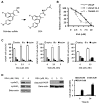
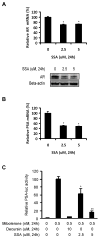
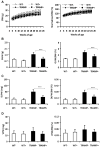
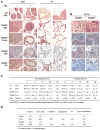

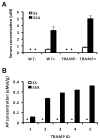
Similar articles
-
Regression of mouse prostatic intraepithelial neoplasia by nonsteroidal anti-inflammatory drugs in the transgenic adenocarcinoma mouse prostate model.Clin Cancer Res. 2004 Nov 15;10(22):7727-37. doi: 10.1158/1078-0432.CCR-04-0732. Clin Cancer Res. 2004. PMID: 15570007
-
Suppression of prostate carcinogenesis by dietary supplementation of celecoxib in transgenic adenocarcinoma of the mouse prostate model.Cancer Res. 2004 May 1;64(9):3334-43. doi: 10.1158/0008-5472.can-03-2422. Cancer Res. 2004. PMID: 15126378
-
A novel sulindac derivative that does not inhibit cyclooxygenases but potently inhibits colon tumor cell growth and induces apoptosis with antitumor activity.Cancer Prev Res (Phila). 2009 Jun;2(6):572-80. doi: 10.1158/1940-6207.CAPR-09-0001. Epub 2009 May 26. Cancer Prev Res (Phila). 2009. PMID: 19470791 Free PMC article.
-
Use of transgenic mice as models for prostate cancer chemoprevention.Curr Mol Med. 2010 Nov;10(8):705-18. doi: 10.2174/156652410793384196. Curr Mol Med. 2010. PMID: 20937024 Review.
-
Nonsteroidal anti-inflammatory drugs and cyclooxygenase-2 selective inhibitors for prostate cancer chemoprevention.J Urol. 2004 Feb;171(2 Pt 2):S59-62; discussion S62-3. doi: 10.1097/01.ju.0000107839.06670.27. J Urol. 2004. PMID: 14713756 Review.
Cited by
-
Novel Non-Cyclooxygenase Inhibitory Derivative of Sulindac Inhibits Breast Cancer Cell Growth In Vitro and Reduces Mammary Tumorigenesis in Rats.Cancers (Basel). 2023 Jan 20;15(3):646. doi: 10.3390/cancers15030646. Cancers (Basel). 2023. PMID: 36765604 Free PMC article.
-
Inhibition of breast cancer cell motility with a non-cyclooxygenase inhibitory derivative of sulindac by suppressing TGFβ/miR-21 signaling.Oncotarget. 2016 Feb 16;7(7):7979-92. doi: 10.18632/oncotarget.6888. Oncotarget. 2016. PMID: 26769851 Free PMC article.
-
Galbanic acid decreases androgen receptor abundance and signaling and induces G1 arrest in prostate cancer cells.Int J Cancer. 2012 Jan 1;130(1):200-12. doi: 10.1002/ijc.25993. Epub 2011 May 9. Int J Cancer. 2012. PMID: 21328348 Free PMC article.
-
Animal models relevant to human prostate carcinogenesis underlining the critical implication of prostatic stem/progenitor cells.Biochim Biophys Acta. 2011 Aug;1816(1):25-37. doi: 10.1016/j.bbcan.2011.03.001. Epub 2011 Mar 17. Biochim Biophys Acta. 2011. PMID: 21396984 Free PMC article. Review.
-
NSAIDs inhibit tumorigenesis, but how?Clin Cancer Res. 2014 Mar 1;20(5):1104-13. doi: 10.1158/1078-0432.CCR-13-1573. Epub 2013 Dec 5. Clin Cancer Res. 2014. PMID: 24311630 Free PMC article. Review.
References
-
- Jemal A, Siegel R, Ward E, et al. Cancer statistics, 2008. CA Cancer J Clin. 2008;58(2):71–96. - PubMed
-
- Petrylak DP. The current role of chemotherapy in metastatic hormone-refractory prostate cancer. Urology. 2005;65(5 Suppl):3–7. discussion -8. - PubMed
-
- Klein EA. Can prostate cancer be prevented? Nat Clin Pract Urol. 2005;2(1):24–31. - PubMed
-
- Parnes HL, Thompson IM, Ford LG. Prevention of hormone-related cancers: prostate cancer. J Clin Oncol. 2005;23(2):368–77. - PubMed
-
- Agrawal A, Fentiman IS. NSAIDs and breast cancer: a possible prevention and treatment strategy. Int J Clin Pract. 2008;62(3):444–9. - PubMed
Publication types
MeSH terms
Substances
Grants and funding
LinkOut - more resources
Full Text Sources
Medical
Research Materials

